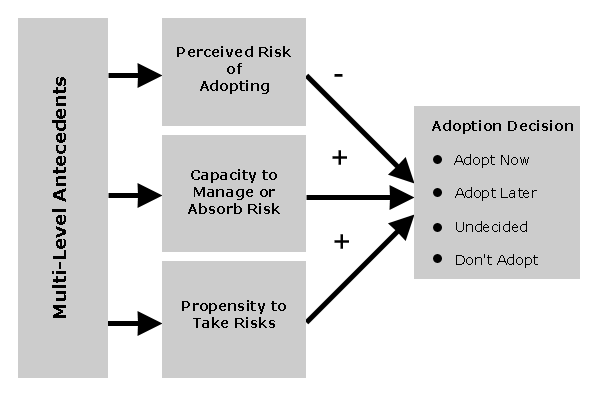All
else equal, the likelihood of deciding to adopt an innovation
increases with the extent to which perceived benefits outweigh
costs. When this occurs, the perceived risk of adoption is likely
to be low (see Figure 1) and a decision to adopt is likely to
be made. As shown below, a decision to adopt also is more likely
when an organization has the capacity to manage down-side risk
(e.g., slack resources are available) and when the organization
has a past history or propensity to take risks.
Figure
1. Phase I: The Decision to Adopt an Innovation as a Decision
Under Risk

Finally,
as indicated in Figure 1, the variability in the perceived risk
of adopting, the capacity to manage adoption-related risks, and
the propensity to take risks is expected to be explained by a
host of antecedent variables that span multiple levels of analysis.
These constructs as well as their antecedents will be measured
in the research.
Research
Home - Page 1 | 2
| 3 | 4| 5
| 6 | 7
< PREV NEXT
>
